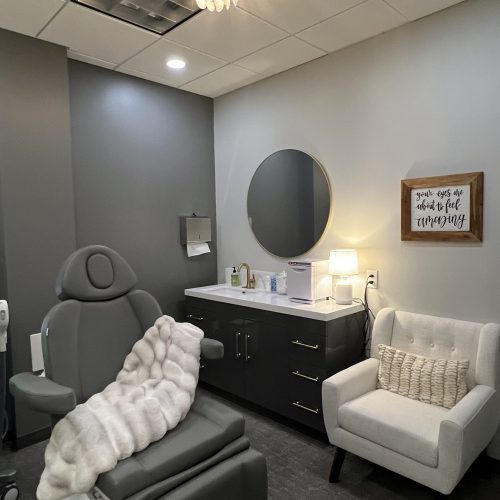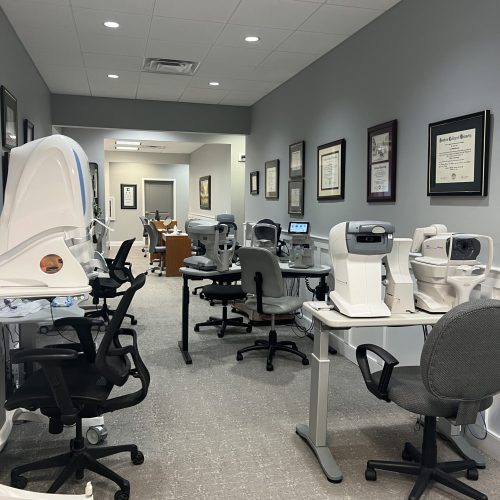Knoxville Tennessee Optometry

In today’s digital world, our eyes are working overtime. From smartphones to computer screens and tablets, the average American spends over 7 hours a day looking at digital devices. This prolonged screen time often leads to digital eye strain and uncomfortable symptoms, including headaches, neck pain, eye fatigue, and blurred vision. Unfortunately, this modern affliction—born from our increasingly screen-dominated lives—doesn’t just cause discomfort but can steal productivity and turn a simple workday into an exercise in endurance.
At Karns Vision Center, we understand how digital eye strain can interfere with your daily activities and overall comfort. Our team of experienced optometrists is committed to providing innovative solutions that address the underlying causes of your eye discomfort. We’re excited to offer cutting-edge Neurolens technology, a revolutionary approach to relieving digital eye strain and improving visual comfort for our patients throughout Knoxville.
Artificial tears are eye drops designed to lubricate the eyes and provide relief from dryness or irritation. Prolonged screen time often causes dry, tired eyes, leading to discomfort and blurry vision. Artificial tears help replenish moisture in the eyes, reducing irritation caused by the blue light emitted by digital devices and ensuring better focus and comfort.
A screen glare filter can be an essential tool for digital device users. It helps reduce glare from bright screens and fluorescent lighting, which can make your eyes work harder and cause discomfort. By filtering out excessive glare, these filters improve visibility, reduce eye strain, and make it easier for your eyes to focus on the screen for longer periods, ultimately preventing headaches and fatigue.
Yes, uncorrected vision problems like nearsightedness or astigmatism can make it harder for your eyes to focus on digital devices, which can contribute to digital eye strain. When the eyes struggle to focus on screens, it can lead to blurry vision, eye fatigue, and discomfort. Using the right prescription glasses, including specialized computer glasses, can help alleviate this strain and improve focus.
Binocular vision dysfunction occurs when your eyes struggle to work together correctly, leading to misalignment. This misalignment forces your eyes to compensate, causing extra strain. Neurolens technology targets this issue, helping your eyes focus more efficiently and reducing symptoms like eye fatigue, neck pain, and difficulty focusing. Correcting this dysfunction can lead to significant relief for digital device users.
Computer glasses are specifically designed to help digital device users reduce strain caused by blue light emitted from screens. These glasses typically feature lenses that filter out blue light and reduce glare from fluorescent lighting, improving comfort during prolonged screen use. They can help minimize symptoms like blurry vision, neck pain, and headaches by making it easier for your eyes to focus and remain comfortable.
You can find us off Oak Ridge Hwy with plenty of parking available outside the clinic.
7686 Oak Ridge Highway Knoxville, TN 37931
Phone: 865-247-7715
Fax: 865-247-7716
Email: co*******@*********on.com
Monday
Tuesday
Wednesday
Thursday
Friday
Saturday
Sunday
9AM-6PM
9AM-6PM
8:30AM-5PM
8:30AM-5PM
7:30AM-4:30PM
9AM-12PM
CLOSED




